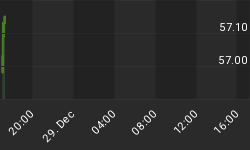The prospect of the U.S. Treasury returning to a more fiscally responsible method of financing its debts has profound implications for the U.S. budget and current account deficits. While it makes perfect sense for the government to borrow for 30 years, I would question the intelligence of any one foolish enough to lend. While it is no secret that individual American debtors have temporally benefited though the use of low-cost, sort-term financing, most notably through the proliferation of ARMs, many have neglected to notice that the Federal Government, the world's largest debtor, has employed the same tactics.
The reason that many individuals, and the Federal Government, have chosen to borrow on the short end of the yield curve, is that in so doing they temporarily reduce the cost of servicing their debts. However, in the long run, this strategy comes at the price of higher interest payments in the future. For the federal government, the future has just arrived. With short term rates now at 3%, and the yield on 30 year bonds at about 4.5%, the savings between borrowing short and borrowing long are not nearly as great as when short rates were only 1%. As a result, the Treasury apparently realizes that it no longer makes sense to keep the maturity of its debts so short.
However, the problem for the Federal government, and obviously American taxpayers, is that the process of refinancing trillions of dollars of short-term debt will inevitably push long-term rates much higher. So not only will the government no longer have the benefit of cheap short-term financing, it will also face much higher long-term rates than would have been the case had they acted responsibly these past several years by locking in low long-term rates while they had the chance.
With the national debt approaching 8 trillion, every 100 basis increase in the average rate at which that debt is refinanced adds 80 billion in additional interest expense which the federal government must pay annually. Since the government is already operating in a deficit, this increase will also have to be borrowed. My guess is that over the next several years, 100's of billions will be added to the annual budget deficit merely as a result of increased interest payments. Also, because a significant percentage of those payments will flow to foreign creditors, the current account deficit will grow significantly as a result. Further, as higher interest rates will likely push the highly leveraged U.S. economy into a severe recession, the structural deficit will swell as tax revenues decline and higher expenditures kick in.
In the end, not only will the federal government be confronted with far bigger budget deficits, but it will also need to finance them at considerably higher interest rates. The Treasury had better hope that Asian savers are willing to step up to the plate, for if they balk, default or hyper-inflation will be the only alternatives. Holders of U.S. Treasuries, or any U.S. dollar-denominated assets, be warned.
















